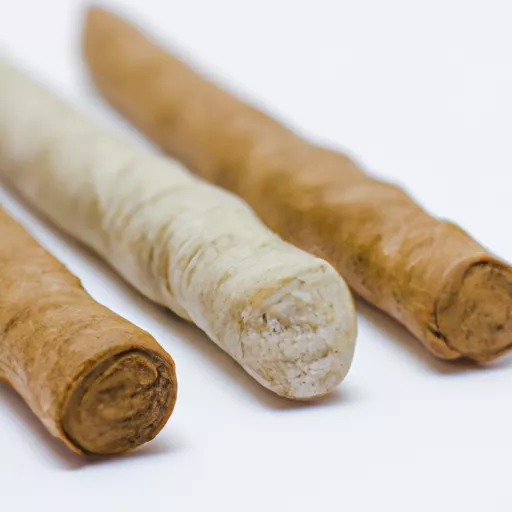
As I sit down to smoke my favorite little cigar, I am transported back in time to my childhood when my grandfather would sit on the porch, a little cigar between his fingers, telling me stories. Little cigars hold a special place in my heart as they not only bring back fond memories, but also offer a unique smoking experience. In this article, I’ll be sharing everything you need to know about little cigars – from their history to their flavors and everything in between.
History of Little Cigars
Little cigars, also known as cigarillos, have been around for centuries. It is believed that they originated in the Caribbean, specifically in Cuba, where tobacco was plentiful. They were first introduced to the European market in the 16th century by Christopher Columbus, who brought back tobacco from his expeditions to the New World. However, little cigars did not gain popularity until the 19th century when machines were developed to mass-produce them.
In the United States, little cigars were first manufactured in the mid-19th century in New York. They became a popular alternative to traditional cigars due to their smaller size and affordable price. During the Great Depression, they saw a rise in popularity as they were an inexpensive way to enjoy a cigar-like experience. However, after the Cuban embargo in the 1960s, little cigars gained even more popularity as they were seen as a replacement for Cuban cigars.
The Production Process
Little cigars are made mostly from tobacco leaves, much like traditional cigars. However, they are wrapped in a thin layer of tobacco paper instead of being rolled in whole tobacco leaves. This makes them smaller in size and quicker to produce. The filling of a little cigar is a blend of tobacco, often mixed with flavors, and it is packed tightly into the tobacco paper wrapper. The wrapper is then rolled and secured with a small strip of glue.
Unlike traditional cigars, little cigars are not aged but instead go through a process called homogenization. This process involves shredding the tobacco leaves and then reconstituting them with various chemicals to create a consistent and uniform blend. The result is a more affordable and mass-producible cigar.
Flavors and Varieties
One of the most appealing aspects of little cigars is the variety of flavors they offer. Traditional cigars often rely on the natural flavor of the tobacco, whereas little cigars have the flexibility to incorporate flavors to appeal to a wider audience. Some popular flavors include cherry, vanilla, and chocolate.
In terms of size, little cigars come in a range of options. The classic little cigar is about the same size as a cigarette, typically measuring around 3 inches in length. However, there are also “convenience store” cigars that are slightly larger at around 4 inches in length. These are often sold in packs of 5 or 10 and are meant to be enjoyed quickly on-the-go.
Smoking Experience
Smoking a little cigar is a different experience compared to traditional cigars. Due to their smaller size, little cigars have a shorter burn time, making them ideal for a quick smoke break. They also tend to have a milder and sweeter flavor, as the tobacco blend is not as strong as in traditional cigars. This makes them an excellent option for those who are new to smoking.
One of the biggest advantages of little cigars is their affordability. While traditional cigars can be expensive, little cigars offer a similar smoking experience without breaking the bank. They are a great option for those who enjoy smoking but are on a budget.
Cigar Etiquette
When it comes to smoking little cigars, there are a few etiquette rules to keep in mind. First and foremost, always ask if it is permissible to smoke in a certain area, especially in public places or someone else’s home. Be mindful of those around you who may not enjoy the smell of smoke.
When it comes to smoking a little cigar, it is not necessary to inhale the smoke. Instead, simply hold it in your mouth and enjoy the flavor. Also, be sure to properly dispose of the cigar after you are finished. Do not litter or leave the remnants behind.
Potential Health Risks
While little cigars may seem like a safer alternative to traditional cigars, they still pose potential health risks. The tobacco used in these cigars contains nicotine and other harmful chemicals, which can lead to addiction and various health problems such as lung cancer and heart disease. It is important to exercise caution and moderation when smoking little cigars.
Final Thoughts
Little cigars may be smaller in size, but they offer a unique smoking experience that is rich in history and flavor. From their roots in Cuba to their current popularity, little cigars have come a long way. Whether you are a seasoned smoker or new to the world of cigars, I recommend giving little cigars a try. Who knows, you may just discover a new favorite pastime.
